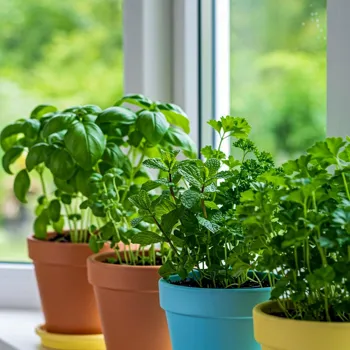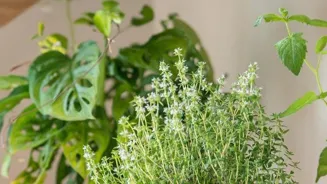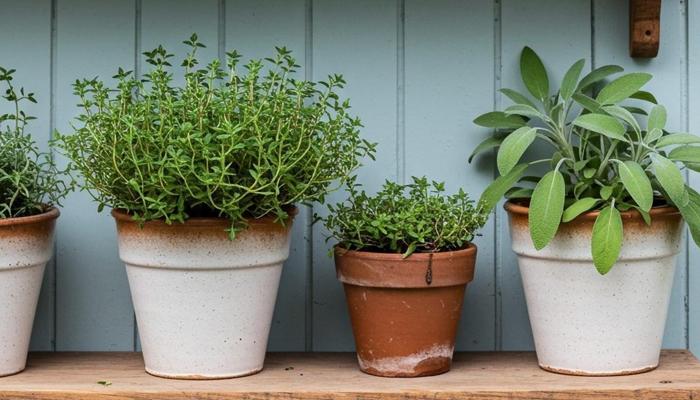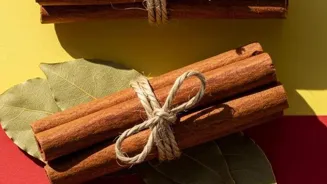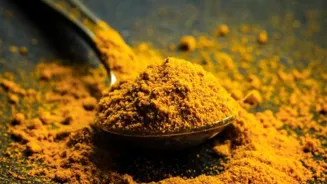Explore the Green Thumb Guide: 10 Essential Herbs for Your Kitchen Garden! Discover the joy of growing herbs at home
Namaste, kitchen gardeners! Are you tired of buying sad-looking, expensive herbs from
the market? Ditch the store-bought stuff and embrace the joy of growing your own fresh, flavorful herbs right in your kitchen!
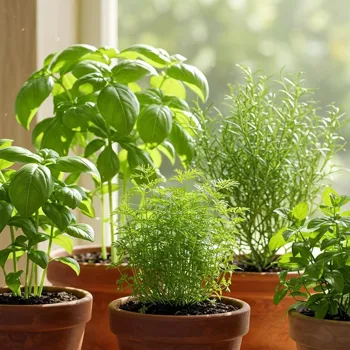
A kitchen garden is not only a sustainable way to add zing to your dishes but also a pocket-friendly and therapeutic hobby. Even if you have limited space, don't worry! Many herbs thrive in containers, making them perfect for balconies, windowsills, or sunny corners in your kitchen.
So, grab your gardening gloves and let's dive into the wonderful world of homegrown herbs! We'll explore ten essential herbs that are easy to cultivate, packed with flavour, and readily available for your culinary adventures.
Get ready to transform your cooking and your living space with the magic of herbs!
Embark on a green journey with Tulsi and Mint, easy-to-grow herbs with health benefits
Let's kick off our green journey with Tulsi (Holy Basil), a herb revered in Indian culture for its medicinal and spiritual properties. Tulsi is not just a flavorful addition to your tea, it also offers a range of health benefits.
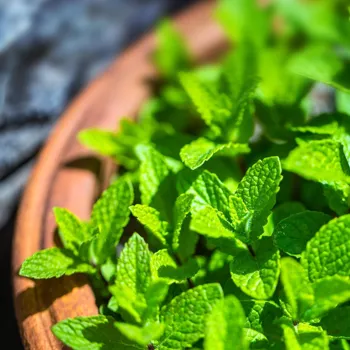
It's known for its antioxidant, anti-inflammatory, and antimicrobial properties. Growing Tulsi is relatively simple: plant seeds or cuttings in well-draining soil, provide plenty of sunlight (at least 6 hours a day), and water regularly.
Remember to pinch off the flower spikes to encourage bushier growth and more leaves. Enjoy fresh Tulsi tea, add it to your salads, or use it in your favourite Indian dishes. Next up, we have Mint (Pudina), a refreshing herb that's incredibly easy to grow.
Mint is perfect for adding a cool, zesty flavour to drinks, chutneys, and raitas. Be warned though, mint can be quite invasive, so it's best to grow it in a container to prevent it from taking over your entire garden.
Plant mint cuttings or seedlings in well-draining soil, provide partial shade, and keep the soil consistently moist. Harvest the leaves regularly to encourage new growth.
Growing Coriander and Curry Leaves in Indian kitchens
Coriander (Dhania) is a must-have for every Indian kitchen. It adds a fresh, vibrant flavour to curries, dals, and salads. Growing coriander from seeds is quite easy. Simply soak the seeds overnight, then sow them directly into containers or your garden bed.
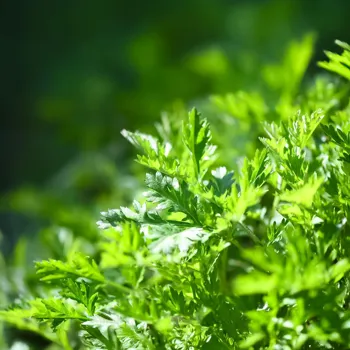
Choose a sunny spot with well-draining soil. Keep the soil moist but not waterlogged. Coriander tends to bolt (go to seed) quickly in hot weather, so you may need to provide some shade during the hottest part of the day. Harvest the leaves regularly to encourage continued growth.
After coriander, let us proceed with Curry Leaves (Kadhi Patta). This aromatic herb is indispensable in South Indian cuisine and adds a unique flavour to curries, dals and chutneys. You can grow curry leaves from seeds or cuttings, but it is easiest to buy a sapling from a nursery.
Plant it in a pot or in the ground, and ensure that they get access to sunshine. Water the plant regularly and fertilize it once a month with organic manure. Pruning encourages bushier growth and better flavour.
Ginger enhances dishes, easy to grow; Chives mild herb for salads
Let’s move on to Ginger (Adrak). While technically a rhizome, ginger is an essential ingredient in Indian cooking and traditional medicine. It adds warmth, spice, and digestive benefits to your dishes and beverages.
To grow ginger, simply plant a piece of ginger rhizome (with visible buds) in a pot filled with well-draining soil. Keep it in a warm, shady spot and water it regularly. Ginger prefers slightly acidic soil. You can harvest ginger after about 8-10 months, when the leaves start to turn yellow.
Next is Chives (Piyaz Patti) Chives are a mild, onion-flavored herb that are great in salads, soups, and dips. They're very easy to grow from seed. Start from seed or buy a chive plant from nurseries. Chives grow in clumps. Harvest by snipping off the topmost leaf or two.
Be certain to leave about an inch or two to continue growing. Over time, your clumps will get bigger and bigger. Each spring, they'll send up little flowers. You can eat these flowers in salads.
Rosemary and thyme growing tips for aromatic herbs
Next up, let’s talk about Rosemary. This fragrant herb adds a distinctive aroma and flavour to roasted vegetables, meats, and breads. Rosemary is a perennial herb, meaning it can live for several years.
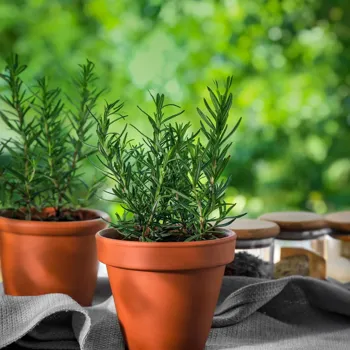
You can grow rosemary from seeds or cuttings, but it's easier to start with a small plant from a nursery. Plant it in a well-draining pot or garden bed, and choose a sunny spot that receives at least six hours of sunlight per day. Rosemary is drought-tolerant, so avoid overwatering.
Prune regularly to encourage bushier growth. Here is Thyme: Thyme is an extremely versatile herb that is an aromatic addition to roast chicken, sauces, and soups. It’s drought-tolerant and extremely low maintenance, preferring hot and sunny locations and well-draining soil.
Start from seed, cuttings, or nurseries. When harvesting, snip off segments of leaves or whole stems. With regular harvesting, you’ll encourage your thyme plant to become fuller and bushier. Be certain to provide sufficient water.
Lemongrass and Bay Leaf: Culinary Herbs for Flavorful Dishes
Lemongrass is a fragrant herb that is widely used in South East Asian cuisine. Lemongrass adds a citrusy flavour to curries, soups, and teas. It is easy to grow in warm environments. Start from seed or purchase lemongrass from a nursery. Plant in well-draining soil in shade or partial sun.
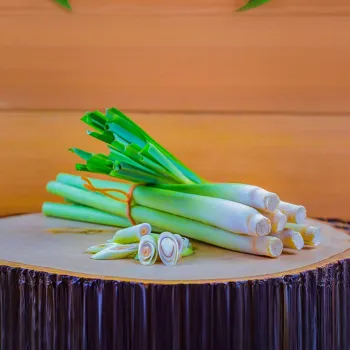
Lemongrass grows in large stalks, and require sufficient watering. Harvest by cutting the stalk close to the base. Lastly we have Bay Leaf for flavouring numerous dishes. Bay leaves are frequently used to flavour everything from soups to stews.
Bay leaf plants are difficult to start from both seed and from cuttings. It is better to buy them from nurseries. Plant in well draining sunlight and provide regular watering. Bay leaf is a delightful addition to all vegetarians.
Ten essential herbs for a kitchen garden
So there you have it, ten essential herbs to kickstart your kitchen garden! With a little bit of effort and a lot of love, you can enjoy fresh, flavorful herbs right at your fingertips. Happy gardening!
